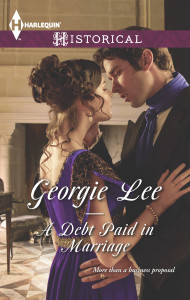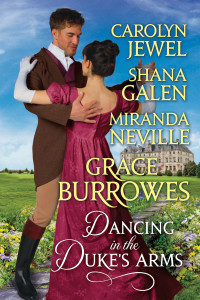Today, The Riskies welcome a guest post from historical romance author Georgie Lee. In addition to her fascinating post, she’s offering a giveaway, so make sure you enter!
Before we get started, here’s a little bit about Georgie:
About Georgie Lee
A lifelong history buff, award winning author Georgie Lee hasn’t given up hope that she will one day inherit a title and a manor house. Until then, she fulfills her dreams of lords, ladies and a season in London through her stories. When not writing, she can be found reading non-fiction history or watching any movie with a costume and an accent. Please visit georgie-lee.com to learn more about Georgie and her books.
Where to Find Georgie
Facebook | Twitter | Goodreads | Blog | Website
The British Sea Service Pistol
In my latest novel, A Debt Paid in Marriage, a pistol plays an important role in both the beginning of the story when the heroine sneaks into the hero’s house and threatens him, only to discover him naked in the bath, and in the turning point at the end, which I won’t describe since I don’t want to spoil it. The pistol in question is a Royal Navy issued flintlock pistol known as the British Sea Service pistol. The army had its own version of this pistol which contained only minor variations.
The Board of Ordinance oversaw the manufacture and distribution of these pistols which were issued from the early 1700s until 1815. The pistols were assembled in the Tower armory but the pieces came from various sources. Made of brass, steel and wood, the user loaded it by ramming the ball and black powder down the nine or twelve inch barrel. The length of the barrel depended on the year it was made, with earlier versions being longer and later versions being shorter. It was a solid weapon meant for use in close fighting during boarding. However, the user only got one shot. Afterwards, it was pretty good for whacking the enemy but not much else, unless a seaman could find a place to hunker down and reload, which, in the heat of battle, wasn’t likely.
The fact that the pistols were government issue did not mean that they were accurate or safe. They weren’t. Flintlocks had a bad habit of misfiring and the harsh sea air aboard ship could wreck havoc on their springs and hammers. The phrase “a flash in the pan” came about in reference to misfires. A flash in the pan is when the flint ignites the gunpowder, or charge as it was known, in the pan but does not fire the ball. With the enemy bearing down on you, this would not be a good thing.
Officers usually had their own weapons especially made for them, but many weren’t above using the standard issue Sea Service pistol. In the painting Nelson Boarding the ‘San Josef’ at the Battle of Cape St. Vincent by George Jones held at the National Maritime Museum, Greenwich http://collections.rmg.co.uk/collections/objects/11984.html) you can see Admiral Nelson holding a Sea Service pistol. Thousands of the pistols remained in circulation for decades after they were no longer issued and it wasn’t just the British who used them. The weapon ended up in several countries, including America, as various enemies captured British supply ships during the numerous wars. Even the East India Company preferred the pistols.
The heyday of the Sea Service pistol would come to an end in the mid 18th century when flintlocks were replaced by percussion cap pistols. However, the Sea Service still remained as many were changed into the less hazardous, but no more accurate percussion cap design. The pistol was a workhouse and a staple of life aboard ship. One of these pistols also plays an integral part in the plot of A Debt Paid in Marriage. After learning about the history of this firearm, I hope you will check out A Debt Paid in Marriage, my March 1, 2015 release from Harlequin Historical.
A Debt Paid in Marriage by Georgie Lee
Harlequin Historical March 1, 2015
Laura Townsend’s plan to reclaim her family’s merchandise backfires when she creeps into moneylender Philip Rathbone’s house and threatens him with a pistol, only to find him reclining naked in his bath!
The last thing she expects is to see this guarded widower on her doorstep a couple of days later armed with a very surprising proposal. A marriage of convenience may be Laura’s chance to reclaim her future, but she won’t settle for anything less than true passion. Can she hope to find it in Philip’s arms?
Where to Get A Debt Paid in Marriage
Amazon | Barnes & Noble | Harlequin
To thank Risky Regencies for allowing me to join them today, and to thank you for stopping by, I am giving away an ebook copy of Rescued from Ruin. This is the book where the hero from A Debt Paid in Marriage first makes his appearance. Just follow the instructions on the Rafflecopter widget below to enter. It is open to international entries. Good luck!




